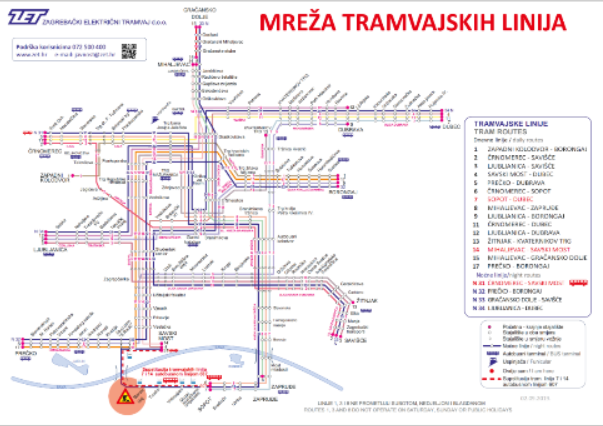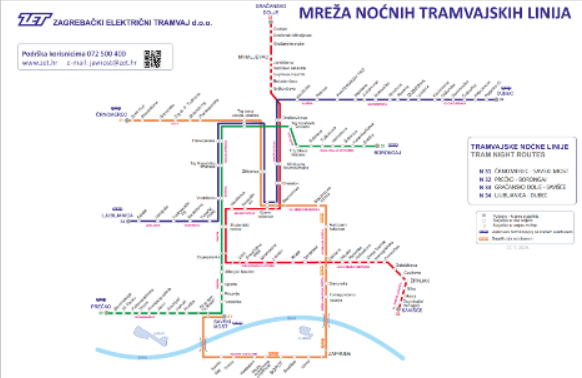Croatian Female Postgraduate Students Outnumber Men 2:1
January 18, 2021 – Newly released figures examining further education demographics show that Croatian female postgraduate students account for a huge 66.3 percent of all those enrolled at this level in the country
Nobody is really sure for just how long women have lived in an imbalanced society. The patriarchal system stretches back thousands of years, favouring male authority and male heirs. It is only within the relatively recent past that we have rightly begun to question the social, legal, political, religious, and economic restraints placed upon women. Key to their continuing emancipation has been equal opportunities in education.
In Croatia, where some consider the patriarchal system to have stubbornly lingered for longer than in other parts of Europe, evidence of society's continuing shift can be seen in the latest figures for higher education. According to the Central Bureau of Statistics (CBS), within the field of specialist studies in the academic year 2019/2020, Croatian female postgraduate students outnumber their male counterparts at almost 2:1.
Of 1429 students who enrolled in specialist continuing studies for the year 2000, some 948 of them were Croatian female postgraduate students. Croatian female postgraduate students account for 66.3 percent of all students enrolled at this level in the country, with their male counterparts accounting for just 33.7 percent.
Social sciences (cultural and social anthropology, sociology, psychology, political science, and economics) accounted for the largest area in which Croatian female postgraduate students chose to study, accounting for 43.7 percent of female enrolments. The next most popular areas of study for Croatian female postgraduate students were biomedicine and health (42.8 percent), followed by technical sciences (5.7 percent), interdisciplinary fields of science (4.5 percent) then natural sciences (1.1 percent). Less than one percent of Croatian female postgraduate students enrolled in the humanities (0.9 percent), biotechnical sciences (0.7 percent) and the arts (0.6 percent).
Most postgraduate specialist students enrolled at the University of Zagreb (79.3 percent), followed by the University of Rijeka (10.5 percent), the University of Osijek (6.9 percent), the University of Split (2.5 percent), and Libertas International University Zagreb (0.8 percent).
Croatian female postgraduate students accounted for 81.8 percent of enrolments for this level of study at Libertas International University Zagreb, 77.8 percent at the University of Split, 68 percent at the University of Zagreb, 62.2 percent at the University of Osijek, and 52.6 percent at the University of Rijeka.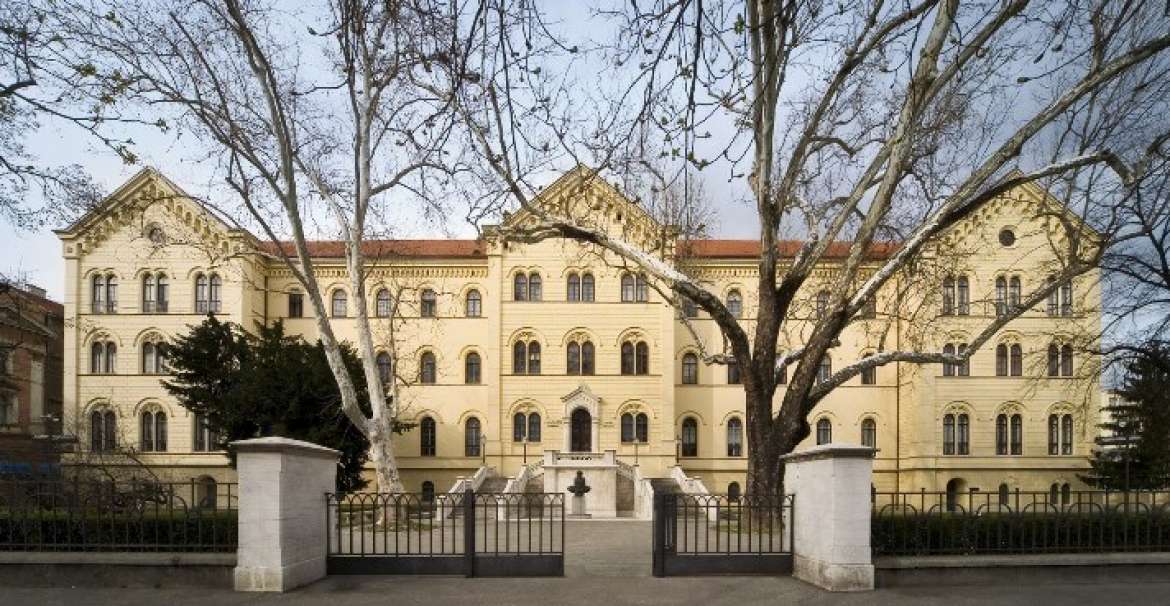 The University of Zagreb © University of Zagreb
The University of Zagreb © University of Zagreb
Most students enrolling for studies at the postgraduate level were aged 30 to 34 years (36.1 percent), with 24.8 percent being in the 25 to 29 age group. 19 percent were in the 35 to 39 age group, 9.9 percent in the 40 to 44 age group, 5.7 percent in the 45 to 49 age group, 2.4 percent in the 50 to 54 age group, 1.1 percent in the 55+ age group and 1 percent were aged 24-years-old.
98.3 percent of all postgraduate students enrolled at universities in Croatia are citizens of the Republic of Croatia. Foreigners choosing to undertake their postgraduate studies at universities in Croatia accounted for just 1.7 percent of enrolments. Of the Croatian citizens, 97 percent had previously graduated in the Republic of Croatia, and 3 percent abroad.
97 percent of all postgraduate students are already employed and 3 percent unemployed. 42.8 percent are employed in the field of healthcare and social care. Employers paid for the greatest share of postgraduate course fees - 55.8 percent of postgraduate students had their course fees paid for by their employer. 43.7 percent of students paid for their own study fees.
PHOTOS: Extraordinary Plants of Klis Fortress Show Two Sides of Dalmatia
January 2, 2021 – High on the mountains, overlooking the city of Split, the historic settlement of Klis stands on the border between two distinct climate regions – the Mediterranean and the Dalmatian hinterland. The sometimes rare and extraordinary plants of Klis Fortress are characteristic of both. A new book details the flora you can find on both sides of the Dinaric Alps
The views from Klis are spectacular. The great city of Split lies below you, perched on the edge of the glistening Adriatic, beyond it, the islands of Čiovo, Šolta, Brac, Vis and Hvar. It's a view that has been admired for over 2000 years. The view from Klis Fortress
The view from Klis Fortress
That's how long a fortress has stood here. Restructured and rebuilt several times over the millennia, within the walls of the impressive Klis Fortress lie much of the recent history of these lands – of the Illyrians and the Romans, the arrival of both Slavic people and of Christianity, the defence of Christian Europe from the Ottomans. So steeped in history are these walls, little wonder the fortress was chosen as a filming location for the popular Game Of Thrones series.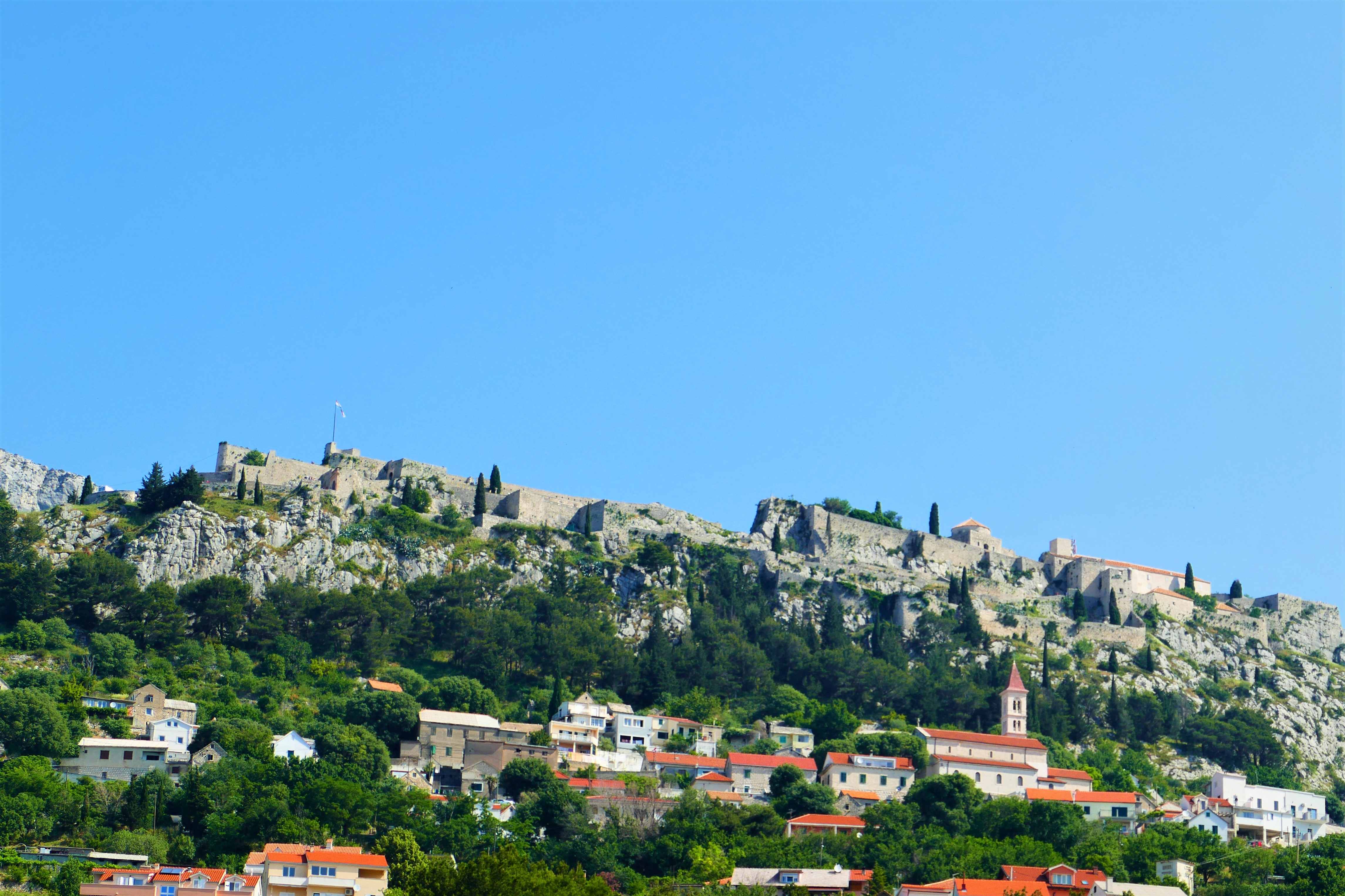 Klis Fortress
Klis Fortress
With its view so irresistibly inviting the eye, you could be forgiven for missing the plants of Klis Fortress. That's unfortunate. The fort straddles the top of the Dinaric Alps – one half existing within the sub-Mediterranean climate of the Dalmatian hinterland, the other on the distinctly warmer side of the Adriatic. This creates a unique environment for a wealth of flora. Not used as a fortress since the threat of Ottoman invasion subsided, these days the structure usually welcomes only tourists. The plants of Klis Fortress have reached into the grounds of the buildings, indeed into its very walls.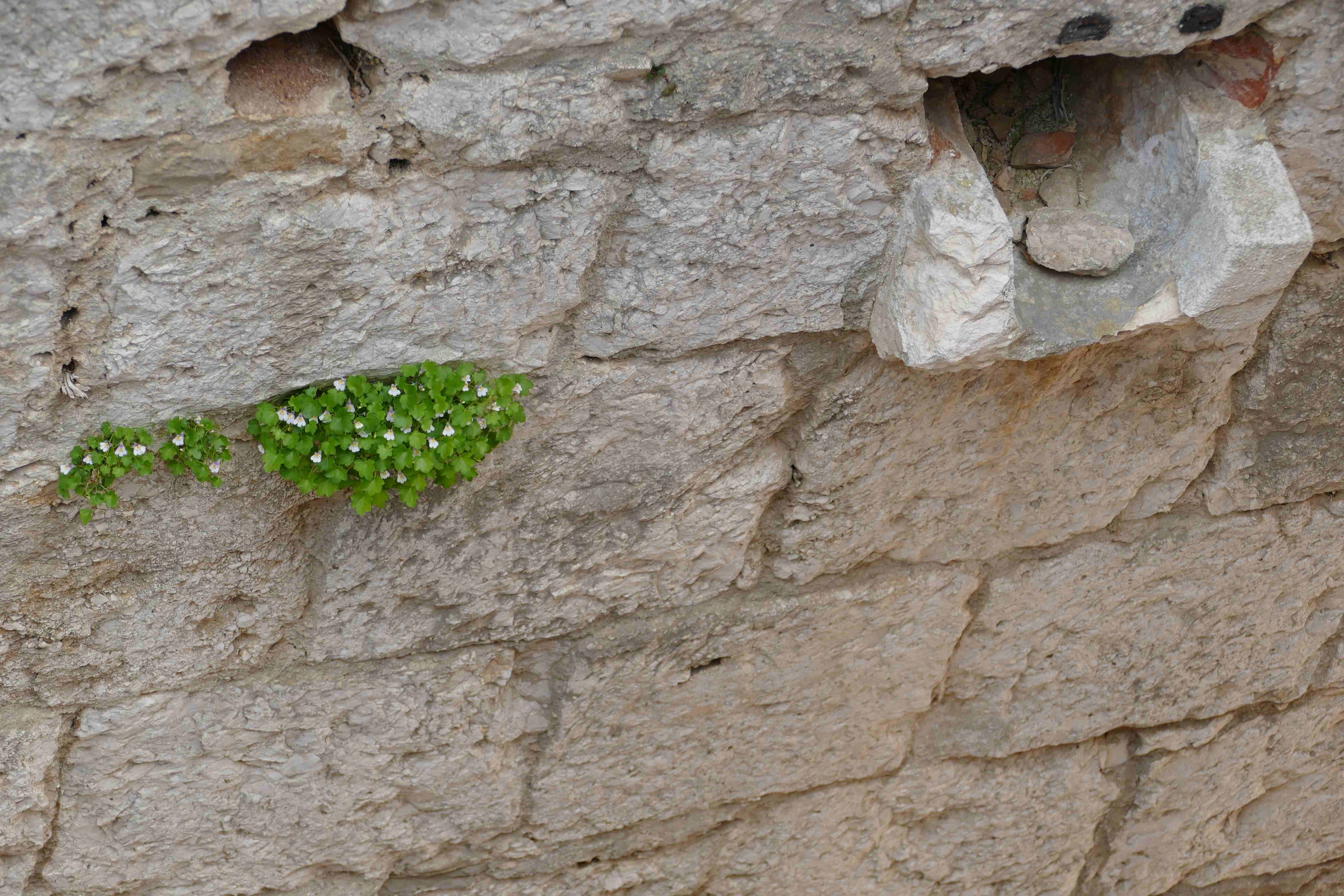 Cymbalaria muralis - Ivy Leaved Toadflax within the walls of Klis Fortress
Cymbalaria muralis - Ivy Leaved Toadflax within the walls of Klis Fortress
One person for who the plants of Klis Fortress did not go unnoticed is Ivan Limić. He lived in Klis all of his life, before leaving to get his degree, then a masters, at the Forestry department of the University of Zagreb. Today, he works for the Institute for Adriatic Crops and Karst Reclamation (IAC) on a PhD student's position. Having a specific interest in botany, he knows the plants of Klis Fortress better than most and after he met botanist Vedran Šegota of Herbarium Croaticum while in Zagreb, they decided they should work on a project together. After several years of work, that project - a book, 'Biljke Tvrdave Klis (Plants of Klis Fortress)' – has finally been released. Although helmed by co-authors Vedran and Ivan, it has actually been a project that involved a much greater group of contributors, not least the community of Klis and some of the best botanists in Croatia.
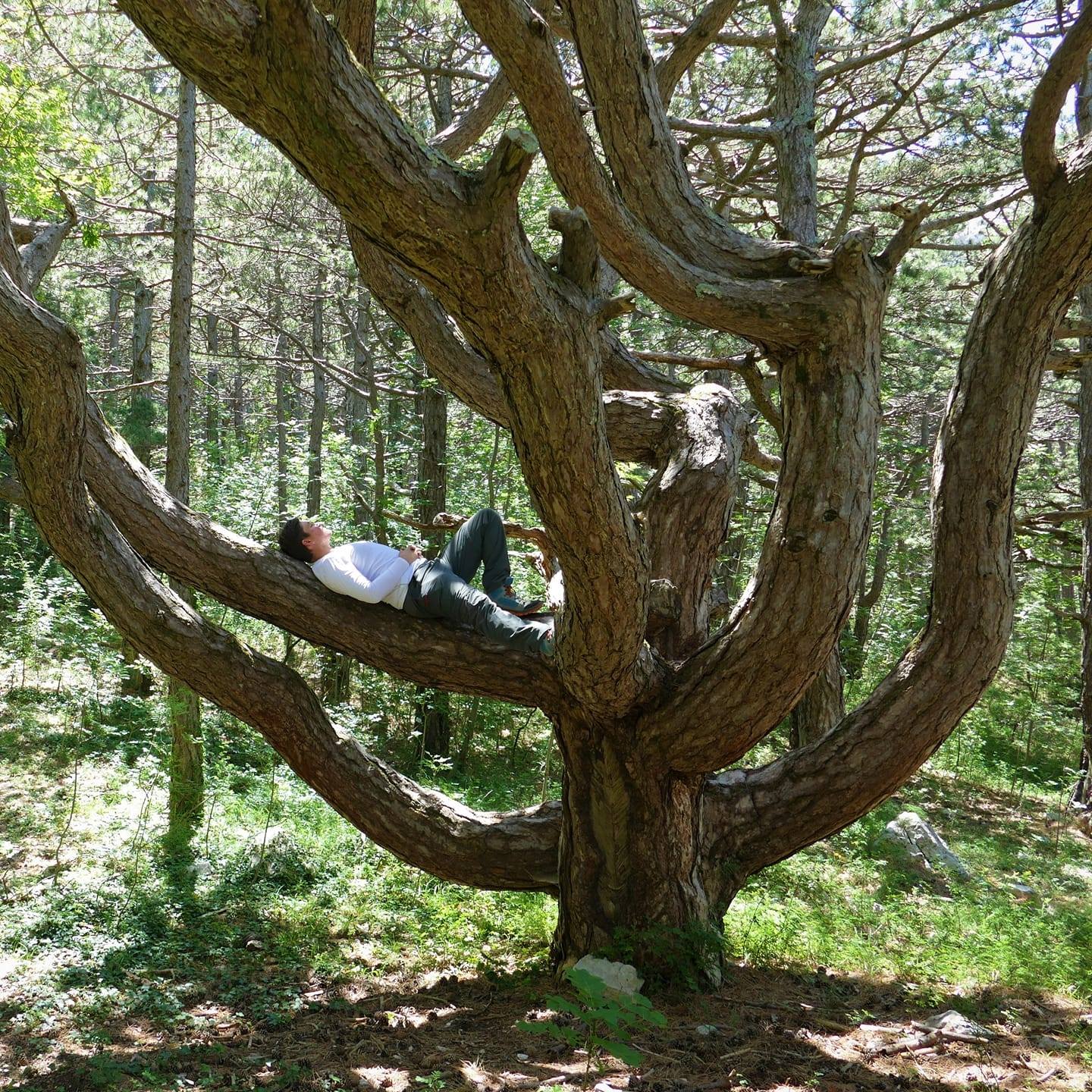
Ivan Limić, co-author of 'Plants of Klis Fortress', relaxing in a Black Pine
TCN talked with Ivan Limić to find out more about the book and about the plants of Klis Fortress
I first met Vedran when I started volunteering at Herbarium Croaticum Zagreb. I was in the city doing my degree. My main interests are forest silviculture and soil erosion, karst melioration, assessment of atmospheric deposition, study of flora, plant determination in Mediterranean region forest ecosystems and the effects of forest fires in those areas. We talked about doing a joint project because we shared similar interests. Vedran came to visit me in Klis and I wanted to show him around the fortress, but looking specifically at the flora. That's when we decided we should do a book about the plants of Klis Fortress.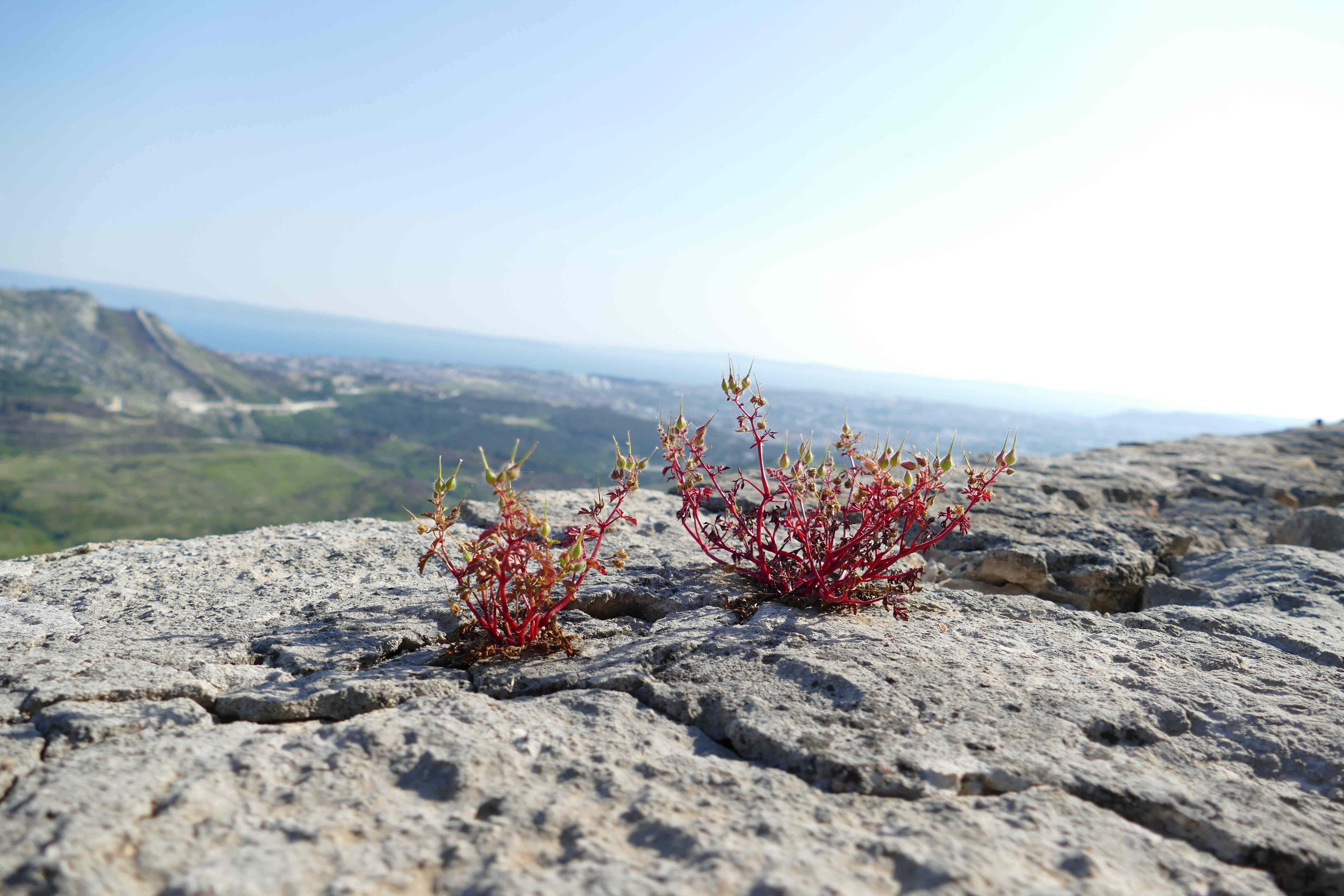 Geranium purpureum, the little-robin
Geranium purpureum, the little-robin
I walked around Klis Fortress all my life. When you live in a place, you not only acquire so much information about that place over the years, you also have an emotional connection to it. That's not something you can read in every book. Hopefully, with our book, we managed to get a sense of that emotional attachment across, so that you can really feel the place.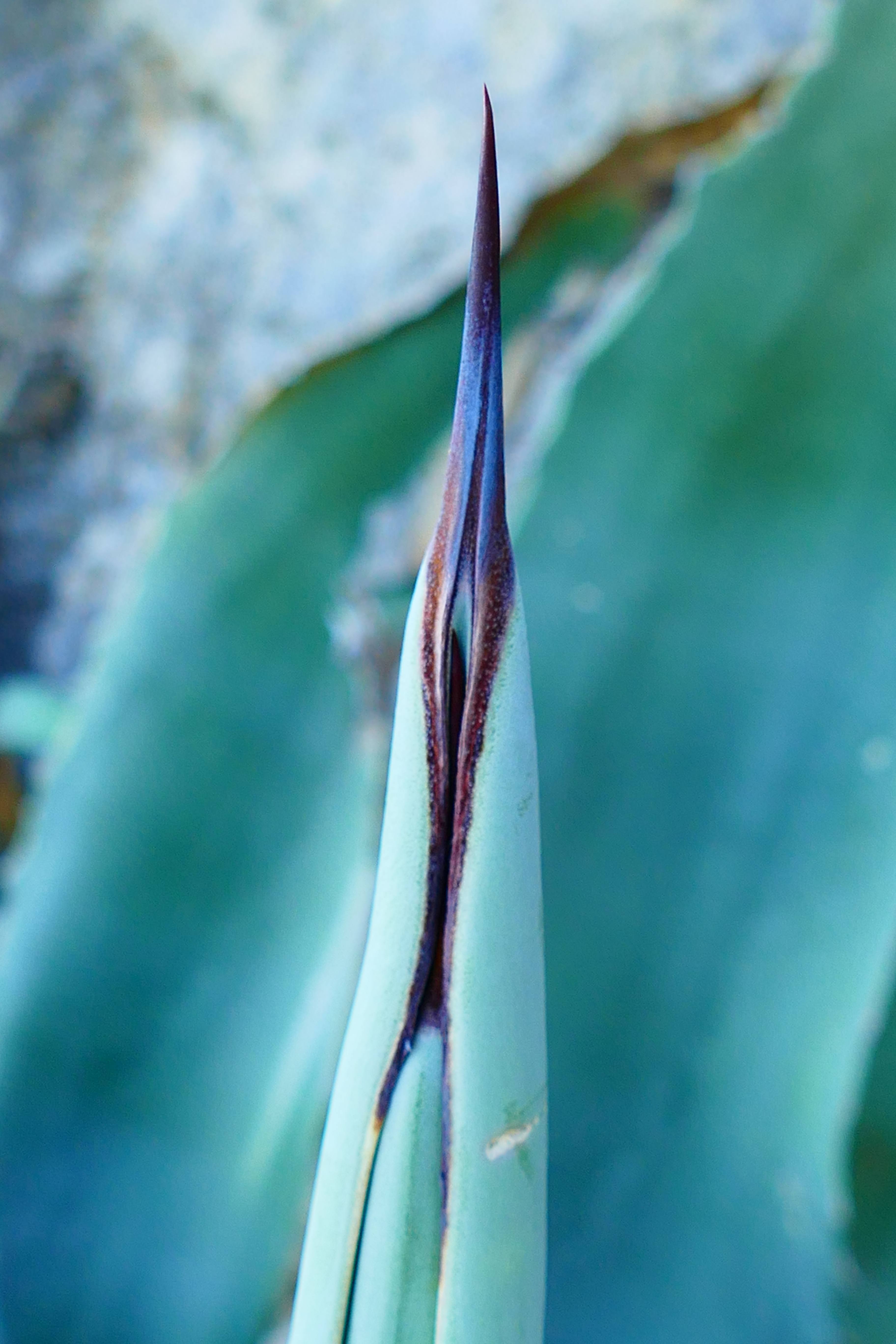 Agave americana
Agave americana
In a way, the special thing about the plants of Klis Fortress is that they are not so special at all – they are extremely characteristic. But, they are characteristic of two completely different climate regions.
On the south side of Klis Fortress, it is very warm and sunny – the Mediterranean climate. You can find species like Aleppo pine. On the northern side of Klis Fortress, it is colder – the sub-Mediterranean climate. Here, you can even get snow in winter and the most common species is Black pine. Two completely different climate regions in just a 50 metre stretch diagonally along the ground. That's what makes it extraordinary. Salvia officinalis (sage)
Salvia officinalis (sage)
The plants of Klis Fortress include more than 300 species. We have around 100 of them listed in the book. Of those, 16 are species endemic to this area. Some of those are extremely rare - you can find them in very few places in Croatia - such as Fibigia triquetra. That plant is actually one of the reasons why this book exists. When I was a child, people used to tell me that some of the plants of Klis Fortress were very unusual and very rare. I used to walk around the fortress, looking at all the plants, trying to guess which ones were the unusual and rare species.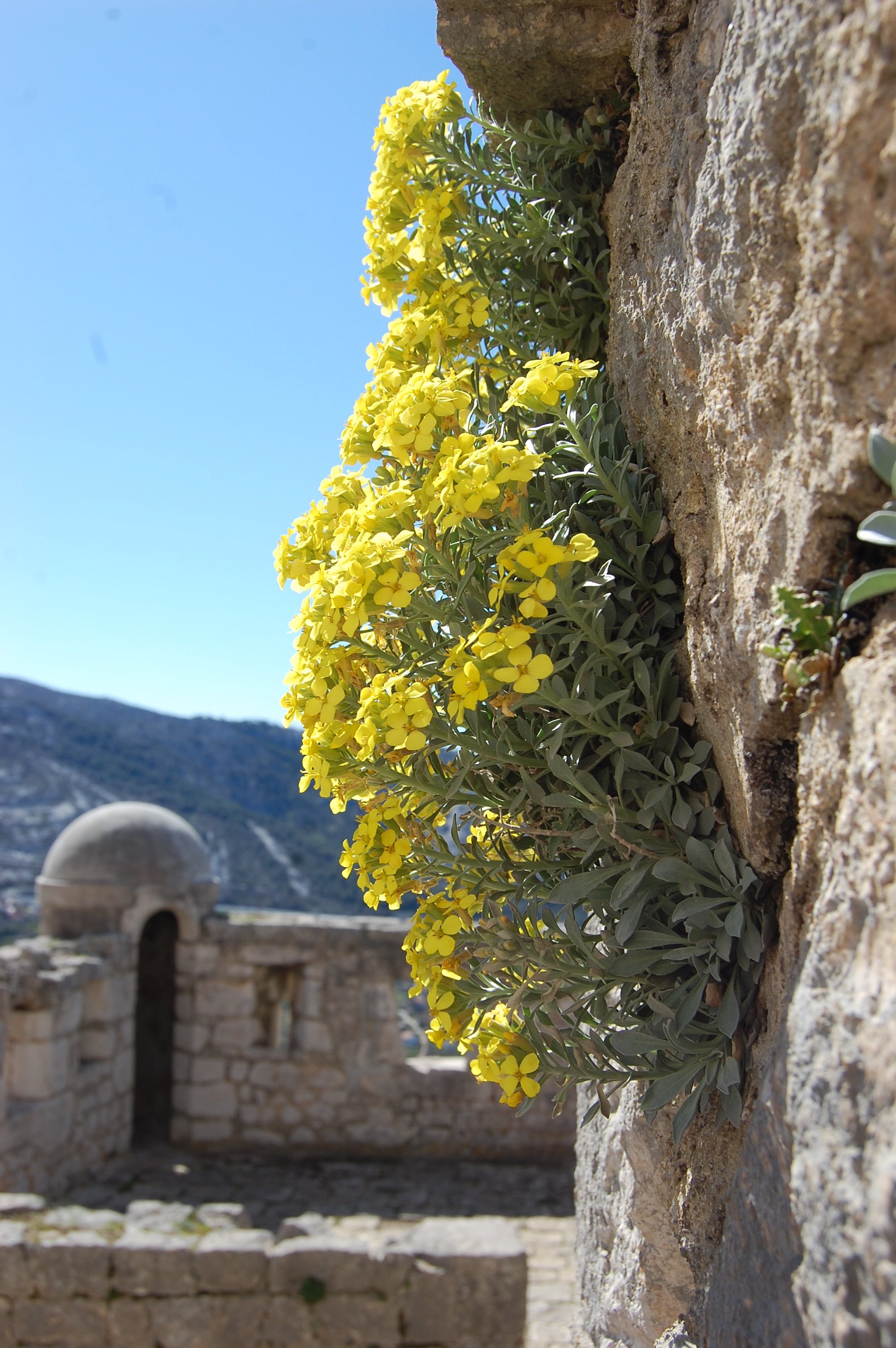 Fibigia triquetra
Fibigia triquetra
The man who first identified this as a unique, endemic species actually discovered his first specimen inside Klis Fortress. All of the studies and writings he made about the plant were done here. That plant is now the symbol of Klis Fortress. Polypodium cambricum
Polypodium cambricum
You can find our book in Klis library. Anyone can borrow it. It's also available at the entrance to Klis Fortress, where you buy the tickets. We wanted to give the opportunity to anyone who comes here to learn about the plants of this region – that's why we made such an effort to have the book in five languages. It was designed as a guide to the plant species of the whole Mediterranean mountain region in Croatia, so it's not just for the plants of Klis Fortress or the people who come to Klis Fortress itself.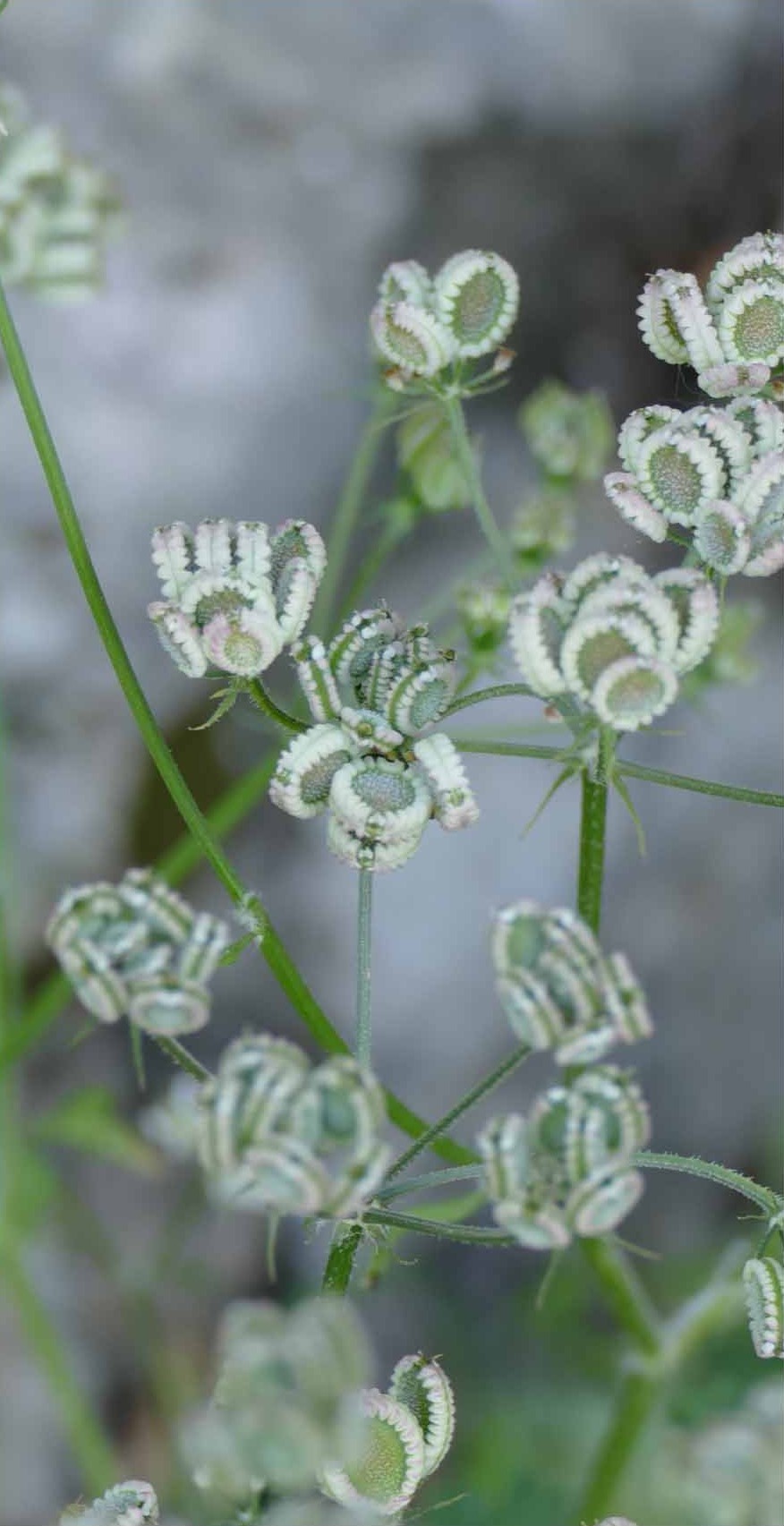 Tordylium
Tordylium
Most of the photography in the book was done by ourselves. It was important to take the photographs across four different seasons. That's one of the reasons it took almost two years to write this book.
 Inula Verbascifolia
Inula Verbascifolia
As we were making progress on the book, people in Klis began to find out what we were doing. It ended up becoming a project of the wider community. The mayor of Klis supported the project financially so that we were able to publish the book professionally and the library of Klis edited and published the book. Ephedra major
Ephedra major
Others contributed to the design of the book and the translations, of course. Almost all of them donated their time and work to the project for free. It is quite difficult to translate some of this specific text correctly and we wanted to get it absolutely right.  Agave americana
Agave americana
In the end, we ended up getting contributions from Italy and France, we had one colleague from the French embassy who helped and some of the best botanists we have in Croatia contributed to the book to make sure everything was absolutely correct. For that reason, the book was approved and recommended by the Botanical Society of Croatia and can be found in the Botanical library.
All images © Ivan Limić / The Plants of Klis Fortress
Zagreb University Part of European Alliance of Universities in Post-Industrial Cities
ZAGREB, Aug 2, 2020 - An alliance of eight European universities, including the University of Zagreb, has received initial support for the development of the European University of Post-Industrial Cities (UNIC) under the European Universities initiative, the University of Zagreb said earlier this week.
UNIC will bring a truly European collaborative structure of universities embedded in post-industrial cities, united by a clear ambition to promote social inclusion with a common commitment to create societal impact, according to the information provided on the UNIC website.
"We will foster a new generation of students who have the knowledge and the skills to create societal impact not just within their own university and city but on a European level."
Apart from the University of Zagreb, the other seven members are the Erasmus University of Rotterdam, the Netherlands; the Koc University of Istanbul, Turkey; the Ruhr University of Bochum, Germany; the University College of Cork, Ireland; the University of Deusto of Bilbao, Spain; the University of Oulu, Finland; and the University of Liege, Belgium.
"We have a clear mission to boost mobility and inclusion for societal impact. The UNIC University is well placed to educate through teaching, research and community engagement, towards inclusive societies," UNIC says.
Možemo! Platform Demands Zagreb University Rector's Resignation
July 19, 2020 - Možemo! political platform said in a press release on Sunday that it demanded that the rector of the University of Zagreb, Damir Boras and his team, should immediately tender their irrevocable resignations over the case of the Faculty of Humanities and Social Sciences.
The left-wing political group accuses the leadership of the University of exerting "institutional violence" against the faculty, and calls on the new government to use all the mechanisms at its disposal to make sure that "irregularities at the University are removed and those responsible are held to account." The recent decision by Rector Boras to suspend the Dean of the Faculty of Humanities and Social Sciences, Vesna Vlahović-Štetić, caused strong reactions in the part of the general public. Boras's decision is based on a final ruling by the Zagreb County Court of June 26 which found Vlahović-Štetić guilty of harassing Ante Čović, a professor at the faculty, thus harming the dignity of employees in the sphere of communication, social relations and quality of their professional status.
On 14 July, a group of employees and students of the faculty marched from the faculty to Government House and handed in their petition against the Zagreb University Rector's decision to suspend the faculty's dean. One of the participants in the protest walk was Tomislav Tomašević of Možemo!, who said then that he supported the protesting students and professors, and accused Boras of abusing the autonomy of the university since he became rector. The press release issued by the Možemo! platform today also criticized the University's Senate for approving the rector's decision on the dean's suspension during an online session, which made it impossible for the participants in that meeting to hold a discussion.
The Senate approved the decision with a two-thirds majority. Sixty-seven of the Senate's 70 members voted, with 48 voting in favor, 12 against and seven abstaining, the Senate said in a press release on 14 July. Recently, seven members of the Senate wrote to Boras that they were outraged by the way in which the suspension of Vlahović-Štetić had been approved, and deans of six faculties decided to withdraw from the Senate's membership.
Zagreb University Guide: 10 Things We Wish We Had Known Before We Started
November 27, 2019 - Thinking of studying at Zagreb University and wondering what you need to know? Our next task for our intrepid interns is a joint project to come up with their ten top tips for noobs.
Hi there, Future Student at the University of Zagreb! If you are worrying about studying in the Croatian capital, you are in the right place. We, Paula, Ana, and Janja, have highlighted ten things we wish we had known before we started our university life in Zagreb. We sincerely hope this article will help you and make your student life more comfortable in the new city. Let's begin!
Financial plan
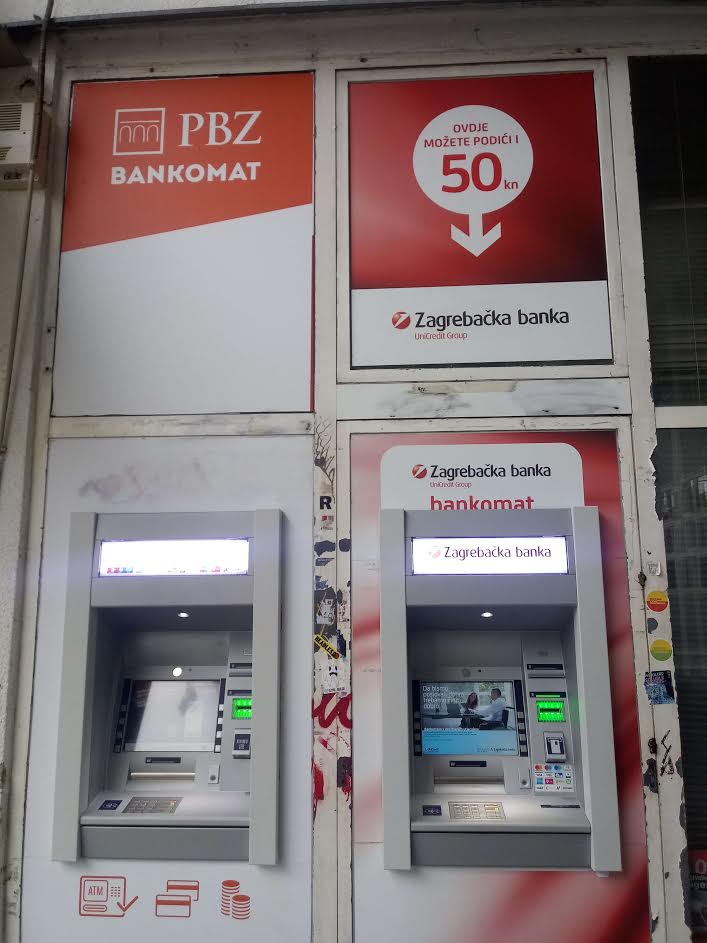
ATM around Student centar (special for students, you can withdraw a HRK 50), credit: Janja Šestak
When you live with your family, you don't bother that much about money, right? Well, when you go to college, it's a bit different. You get money from the parents, grandparents, aunts, and uncles. You have your own money, but you are also in charge of spending the money. That might sound fun at first, but not everything is as easy as it sounds. Firstly, our warm recommendation is to make a financial plan for the whole month. Housing, food, clothes, coffees, parties, and the most important, of course, literature for college ;), all of this requires a certain amount of money. Pay attention to how much money you spend, and is there really a need to eat at McDonald's or fancy restaurants so often. When you buy food, make sure you rather spend money on quality products and buy on discount if possible.
If your grandparents ever forget to send you the money, you can apply for a scholarship. Each year, the Ministry of Science and Education awards three types of state scholarships to full-time college students: state scholarships to students in STEM fields of science (1200kn), state scholarships to students based on socioeconomic status (1200kn), and scholarships to students with special needs (1200kn).
More information can be found on their website.
Also, some faculties have their own scholarship, which they use to encourage their students to study harder. Don't forget to thoroughly research the faculty you are applying to. Another thing to keep your eye on is the Scholarship and Higher Education Fair, which is held every year in October in three Croatian cities: Zagreb, Zadar, and Rijeka.
Housing: apartment, family, or student dorm?
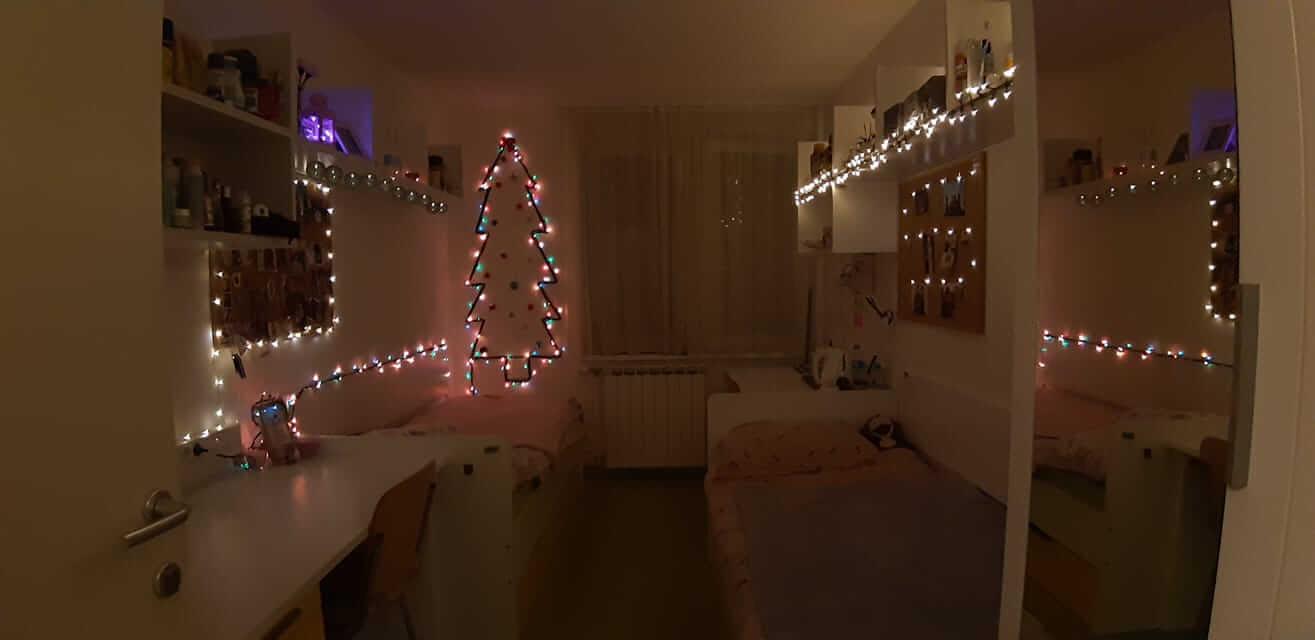
Christmas room in a dorm, credit: Petra Lončar
There are different types of accommodation for you in Zagreb. The first one is pretty simple. If you are from Zagreb, you are probably going to remain in your family home. The second option is taking the matter into your own hands and finding an apartment. With it comes all the responsibilities of cleaning and cooking by yourself. The last and most common one for anyone coming to Zagreb is living in student dorms.
All three of us have different experiences regarding housing. Paula is from Zagreb, so she lives with her family, Ana is from Šibenik and lives in the flat and Janja, also not a student from Zagreb, used to live in a student dorm.
Janja lived in student dorm Stjepan Radić, popularly called the Sava, and her experience was a surprisingly pleasant one. She was in a renovated 7th pavilion on the first floor. One of the most important things about living in a dorm is your roommate. If you get a normal one, you're lucky. So, if there's a chance, try to meet your potential roommate before you two move in. Secondly, Sava is the biggest dorm of all, and it has around 4000 beds. In the dorm complex, there is a fitness center, a cinema hall, classrooms, a foreign language school, a medical and dental office, a dance hall, two student food restaurants, and a pizzeria, as well as a cafe popularly called "Slasta." You can find all the other information on the website that we linked to above.
There are a few other things to know which you will not find on the website. If you're a quieter person, we recommend pavilions 7th to the 9th. But if you are more of a party-animal, book pavillions 1-4 because they are closest to the famous night clubs, Roko and Žabac.
The unwritten rule is that students greet each other in the hallways of the dormitory, hold the door open, and have respect for others. You might be wondering right now about the last thing. Let me put it in this way: You just passed the last exam and want to celebrate it with your friends. You invite the people in your room, put the music on, and after half an hour, you hear knocking on the door. You open the door, and there are security guards who say that someone has reported you because of the loud music. They will kindly ask you to turn the music down. What we are trying to say is that there is no problem in celebrating. The problem is in people who might not be the kindest if you party in the middle of exams season. If you want respect from your co-habitants, you have to act the same way towards them as well. Don't call the security guards as soon as you hear music from the room across you. Instead, come to the room where the LOUD music comes from and kindly ask them to turn it down a bit. If they are rude to you, feel free to call the security guards, and they will solve the problem.
People often say that the Sava has soul. And you know what? It truly has. It's wonderful when, in the evening, there are a bunch of young people sitting on the benches, some of them playing the guitar, others just talking with each other... The Sava is a mini-city for students and the best you can get if you are here both for studying and fun.
Apart from the Sava, there are Student dorm Ante Starčević (known to most of the students as Šara), Student dorm Lašćina and Student dorm Cvjetno naselje.
Even though we don't have the first-hand experience with any of the other dorms, we can assure you they don't have significant differences. The only thing is that the Sava is the biggest Student dorm. The Sava also has its Facebook group, where students help each other with all the necessary information. In that group, students make jokes, ask each other where they can buy cheap food, and inform each other about security and payment issues. Also, there will always be information about upcoming events in clubs and other exciting events in Zagreb.
Life with your parents has its ups and downs as well. While your colleagues have a hard time figuring adult tasks such as doing the laundry or cooking and have just now realized how extremely grateful are they for their moms at home, some of you might wonder what the best way to "survive" living with your parents for the next five or more years is. While some of you think everything is magically going to change as soon as you enroll in college or live in an illusion that your parents will be more understanding of you since you are a college student now, forget it. Most of you will have the same relationship with your parents you use to have while you were in high school. That is why a significant number of people go on Erasmus exchange or try living on their own by the end of college. While living with your parents might sound like a hard time, try asking some of your friends who live on their own or in student dorms how much more they appreciate their parents.
Living in a flat is a whole other story. When you live in a flat, make sure you know the person that lives with you very well. We recommend you know the person because figuring out a financial plan and agreeing on who does the house chores might be hard with someone you don't know that well and aren't used to. When you are looking for a flat, make sure you find the location from which you have the least to commute to your college. Furthermore, search for places where tram, bus stations, and stores are nearby. Also, make sure your landlord is not strict and that they don't request frequent inspections. Make sure your flat has all the necessary equipment such as washing machine, TV (if you watch it), Internet, central heating, etc.
Living on your own is great because you have your own space and you don't have to depend on the cafeteria for your meals. If you are a good cook or don't feel like eating the same thing every day, this is the ideal time to perfect your cooking. Besides, you are not as restricted as your colleagues in a student dorm and can bring friends to your apartment if you wish to. But bear in mind when your friends come and the party starts, you might find that you have neighbors sensitive to loud music here as well.
Traffic in Zagreb
One of the most frequently asked questions almost every student who is not from Zagreb asks probably for the first month or so is, "In which direction I am supposed to go?"
This sweet problem is part of Zagreb's public transport, which includes trams, and buses owned by a company called ZET (Zagreb electric tram). The monthly student pass is HRK 100, while the annual is HRK 960. If you choose the monthly option, remember to renew it on the 1st of every month. Otherwise, you can be charged up to HRK 800. There is a valid reason why ZET's official motto is – A ride without a ticket/pass - The most expensive ride. You can renew your pass at kiosks or in ZET offices.
Essential information for students who like to party in many of Zagreb's famous clubs or are going home from a friend because they studied till 3 a.m. - be aware there won't be a tram every 7 minutes. There is a big difference between daily and night tram transport. In the 21st century, with the help of Google Maps, there shouldn't be a problem to get somewhere, right?
This is a screenshot of a network of nightly tram lines that run on average every hour.
Get informed, don't be shy!
We all know what it is like to be a lost student in the faculty building, searching for the right lecture hall. The most important thing is to relax. You can always ask a doorman or some person who seems approachable. Don't be shy! There are always older students who are willing to help you. Try to find Facebook groups and join them. You will find a bunch of useful information. If you don't find the answer to the thing you are searching for, ask politely, someone will answer it. If you can help others, this is also great. You will get to know many people through conversations such as "Where is the next lecture?" and remember, some of them might become your friends.
One important thing about having a lot of friends in the first year is that you have to be aware that some friendships won't last. Don't take it as something bad; be natural, and real friends will eventually come around.
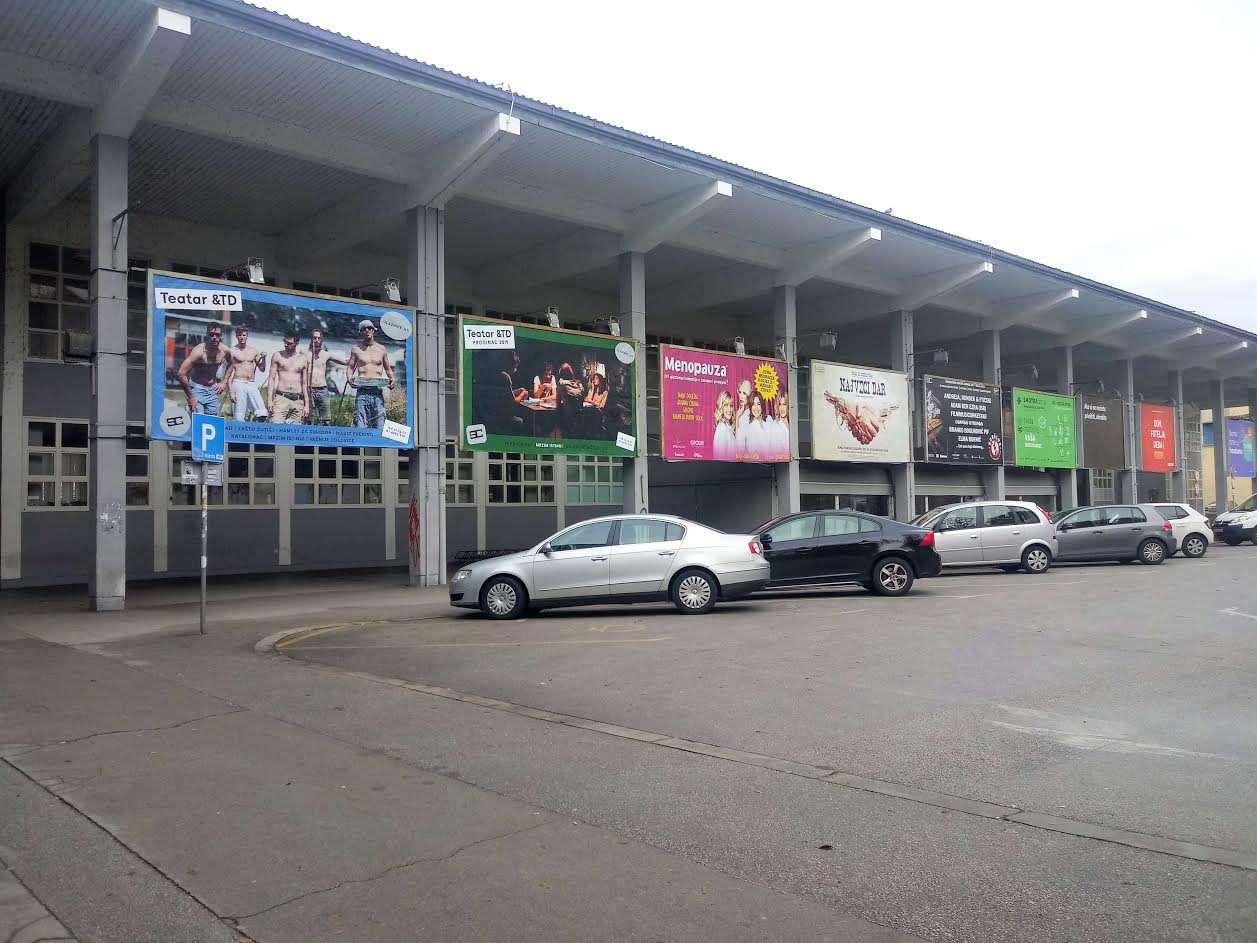
Posters in the front of the SC, (recognition of the SC), credit: Janja Šestak
If you want to do some extra job, volunteer, or you already want to start working in the field in which you are studying. Maybe it would be better for you to leave it for next year or at least the next semester. College is not a high school. There are numerous new things that you have to get used to. You might have moved from your parents, you are meeting a lot of new people. Give yourself some time and only then include work and/or volunteering.
Lectures and how to survive them
You have to be aware that some lectures won't be that interesting. Our sincere advice is, no matter how boring the lecture is, be there. The first week is one of the most important weeks, and it's often called orientation week. That means professors say the most important things every student needs to know - dates of midterms, which literature you have to have, where to find a syllabus, how many absences you can have (!), and whether the lectures and seminars must be attended. We recommend you pay attention to how many times you were absent because if it's more than the professor says, you won't get his signature in the Index. That means you can't pass that lecture. It is a pretty big deal, so don't play with that.
On some faculties, you can pass the course without taking the exam in exam season (February, June, or September), but rather be done with it earlier and pass it through the midterms. Then again, don't be upset if you don't pass the midterms and have to take an exam, which includes a whole semester to learn. It's not the end of the world. You will just need to organize better in order to learn everything!
Literature and how to spend the least amount of money on it
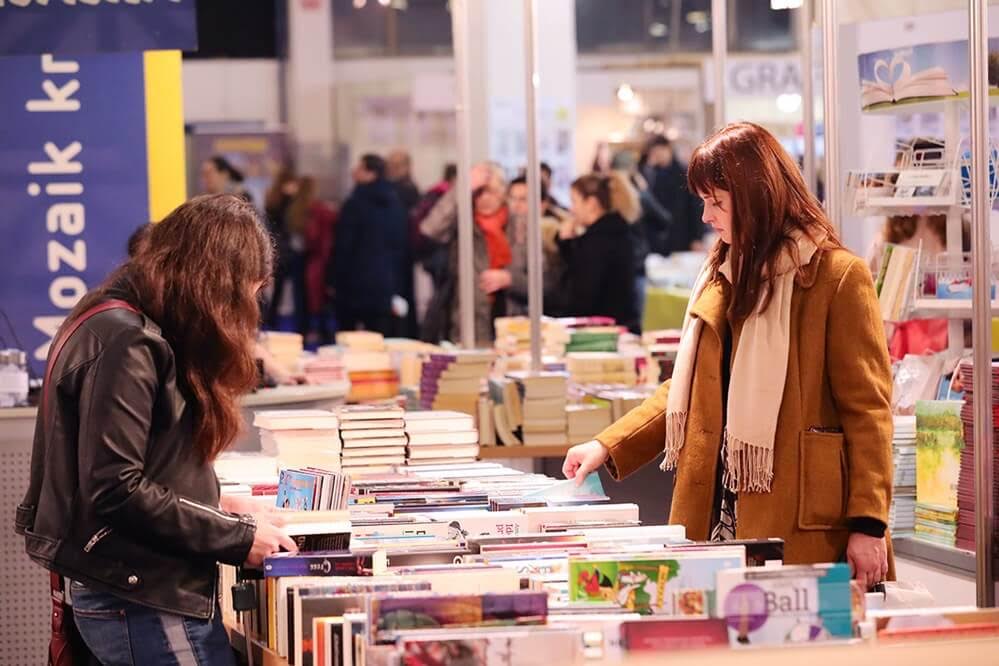
Interliber, credit: zv.hr (Official page of Zagrebački Velesajam)
One of the most significant differences between High School and college is definitely the amount of books you will read (or will you?) during the course of your higher education. Most of the classes will have their mandatory literature, and without reading it, it is highly unlikely you will pass the exam. The problem is that most of these books can be pretty expensive, especially for students. But there is a solution to the problem – INTERLIBER.
Interliber is a book fair that lasts for a week, every year, during November (great if your exams start in late November, early December), which offers a wide variety of books for cheaper prices. You can either find books for leisure reading for rather symbolical prices of 5 to 10 kunas or stumble upon a significant discount for your mandatory literature.
If you are one of the lucky ones, and your college doesn't oblige you to buy all of your literature books, but you still need to find the books somewhere, Zagreb City Libraries (Knjižnice grada Zagreba -http://www.kgz.hr/en/about-us/zagreb-city-libraries-today/523) or National and University Library Zagreb (Nacionalna i sveučilišna knjižnica - http://www.nsk.hr/en/) are the most important places you can go to. Both of them require you to pay for membership fees and in return, offer a broad range of books that can be related to your subject of study. If you feel overwhelmed already, both of the libraries have a catalog of all of their books on their website, and you can even check if the books you need are available.
Zagreb City Libraries are not as student-oriented as the National and University Library. There are 42 City Libraries located throughout Zagreb, many of them in the city center. However, there are some in the neighborhoods not so close to the center. If we had to single out the best library in the city center, it would be Bogdan Ogrizović Library near Cvjetno square, which has the biggest collection of books in English. The annual fee for ZCL is HRK 50, and with it, you can borrow books from all ZCLs. Working hours for ZCL are from 8 a.m. to 8 p.m., so you have plenty of time to borrow books and study there throughout the day.
If you are the type of person who can study while being surrounded by other people who study, the National and University Library is the place for you. It is located in Hrvatske Bratske Zajednice street number 4, next to Zagreb fountains, and it is the perfect building, which is both the place to borow books and study if you can't find peace anywhere else. The annual fee for NUL is HRK 100, but you can be sure to find all the mandatory literature in one place.
Student jobs
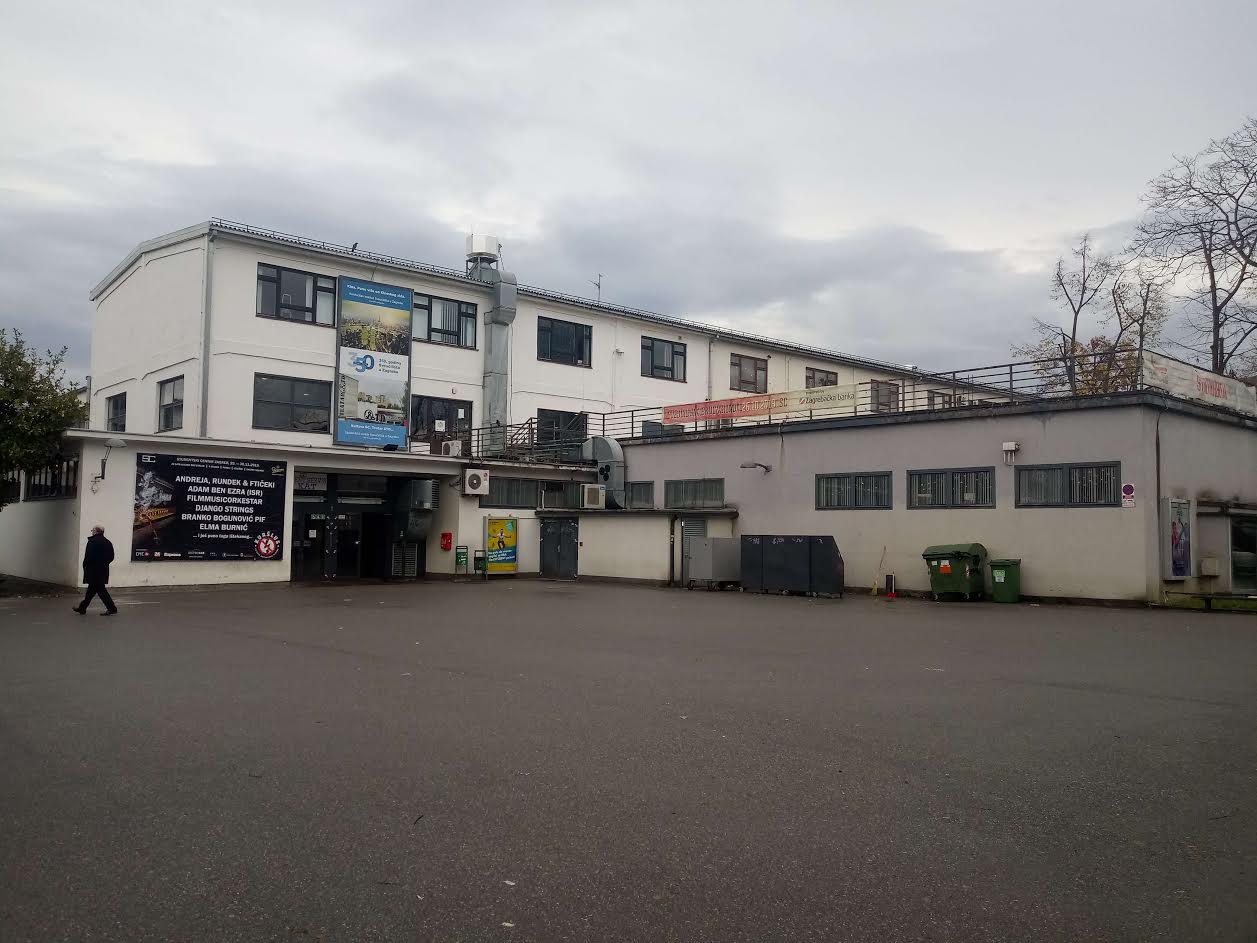
The building of Studentski Centar, credit: Janja Šestak
More than 60% of students in Croatia work through the Student service. Most of them only get the chance to work during the summer break, but those of you lucky enough to have some free time left after your lectures might be able to work throughout the year.
There are many great reasons why you should get a job. For starters, having some pocket money on the side can be a great help to your parents and a first step in becoming economically independent. Trust us, your parents will be extremely grateful if they don't have to pay for everything you do in your free time.
If you decide to get a job, the first thing you need to know is to create a student contract in the student service (Savska 25), one floor above the student cafeteria. Prepare yourself for gathering a lot of official papers and waiting in a line, but after that, you can be sure you will get a job you will be paid for regularly and fairly.
What you'll need to enroll in Student service are following official papers:
1) college confirmation that you are a full-time student (can be electronic record as well)
2) identity card (ID) – osobna in Croatia – it is necessary to prove your identity
3) IBAN personal giro account – a bank card or a contract with a bank, that way Student service can be sure money will come to your account and not someone' else
4) OIB number – same as ID, only for confirmation of your identity
5) 35x25 mm format photo
6) X-card (X-ica) – confirmation document for all students –
- • recent high-school graduate students can present Indeks if they haven't received their X-card as well as a certificate that shows they have finished the final year of high-school and printout of the application for state matura examination or a certificate of the state matura examination
Student service is for full-time students and high-school graduate students who have finished their matura exam and want to work during the summer before their college starts.
If you've fulfilled all the above instructions, you can start looking for a job. Your best chance lies in sending an e-mail of application and your CV on one of the numerous job applications you will see on the Student service page. Remember not to be disappointed if your first application doesn't result in you getting a job right away. Don't be afraid to send an e-mail and CV to multiple addresses.
After you have found the job and got through the interview, you should watch out for these things as well:
1) as of January 1st, 2020 your minimum hourly wage should be 25,38 kunas
2) students that work don't have usual health insurance that full-time employers have, so make sure you check on the Croatian Health Insurance Fund pages (HZZO) what kind of insurance if any, you have
3) watch out for night shifts, working on Sunday and during state or religious holidays
- a) night shifts are counted from 10 p.m. and your hourly wage should be 30% bigger than on the regular workday
- b) on Sunday, your hourly wage should be between 30 and 50% more than on the regular workday
- c) your hourly wage for state and religious holidays should be at least 50% bigger than on a regular workday
4) a minimum of one day off per week is mandatory
5) when it comes to working multiple shifts, remember that there needs to be at least 12 hours break between two shifts
Unfortunately, student work isn't regulated by strict law. That means that some people like to take advantage of students by making them work multiple shifts in a row, not paying them enough, etc. This problem can be easily solved by educating students about their rights and finding out who you'll be working for, how much you'll work, and in what conditions.
X-card (x-ica)
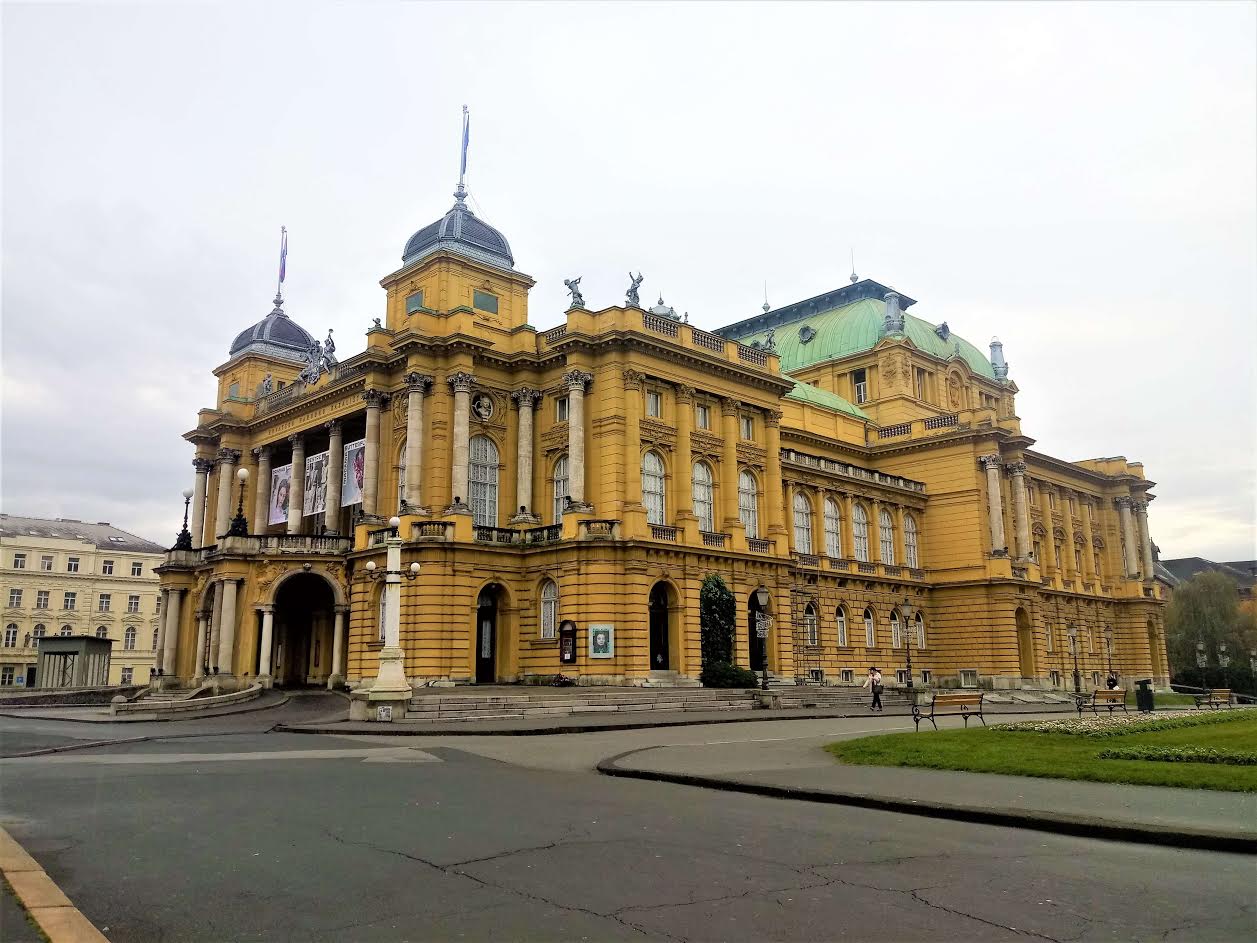
HNK, the Croatian National Theathre - credit: Janja Šestak
In addition to cheaper food in the cafeteria, X-card can also give you other advantages and make your student life a bit more than studying and attending lectures. You can get a discount if you buy student passes for trams and buses. Also, there are discounts for students traveling home, and all of that can be achieved if you show your X-card.
If you are a fan of sports or just want to keep your body in shape during your college days, you can get a discount with X-card in various gyms and sports clubs. The Sava student dorm has a gym, which you can use an unlimited amount of time for only 100 kunas per month. Other offers include Zumba and aerobics, both of which you can practice two times a week, also for 100 kunas. In Cvjetno Naselje, unlimited fitness gym is 125kn, Zumba two times a week is 100kn, Aerobics three times a week is 125kn.
If you are passionate about movies and enjoying going to the cinema, but you think CineStar is a bit expensive, don't worry. You can get a discount there as well. You will pay 23 kunas for movies that last 120 minutes, and 25 kunas for movies that last 120 minutes and more. In addition, every Wednesday, all the tickets are 20 kunas.
More information can be found on the link.
If you are a fan of theatre, there is something for you as well. With your X-card, you can watch a show at Kerempuh for 45 kunas. The Gavella, one of the Zagreb's most famous theatres, has a special card for pupils, students, pensioners, and for people with disabilities. The price for the card is 35 kunas as well as ticket price. Theatre Komedija enables students a 20 percent discount for one ticket if you show your X-card.
Explore Zagreb
When you get tired of studying and want to relax with your friends and drink for affordable prices, you might want to check Žirafa. It is one of the most visited places if you are a student in Zagreb, and is located in four locations: Jurišićeva 19/, Maksimirska cesta 64, Gunudlićeva 11, and Ilica 70. The other clubs in Zagreb for students are Club Roko (Jarunska 5), Žabac (Jarunska 1), and Klub klub (Pavla Haltza 14).
From the beginning of December till late January, Zagreb becomes the most beautifully decorated city in Europe. It even won the award for it three years in a row.
King Tomislav Square has a big ice rink, and there are many stands all over the city which sell mulled wine, sausages, or if you like something sweeter, fritters (fritule), germknödeln, and many more delicates from all over Croatia. The main square (Ban Jelačić Square) is also famous for its many concerts during the winter period. Park Zrinjevac is very beautiful when the snow comes, and there are great concerts of traditional Christmas songs there as well.
Klovičevi dvori are famous for being the most photographed place during the advent. From the back entrance to the Klovičevi dvori, there is a breathtaking platform that offers a view of Zagreb Cathedral. Free concerts are also held there. For more information about advent, take a look at their page https://www.adventzagreb.hr/.
If you are into sports, Jarun is an excellent place for you. It has a track for running, skating, riding a bike, or taking a walk with your friends. Jarun is very close to Studentski dom Stjepan Radić. During the summer, precisely in June, Jarun is the home for the Inmusic festival. Bundek is also a lovely place for sports activities, as well as concerts. In September they have an event which is called Rujanfest, the prices are not expensive.
If you love skiing and hiking, Sljeme is an excellent place for you. Medvednica, a hill under which Zagreb lies, is a popular weekend getaway for the people from Zagreb and can be an alternative offered on some Faculties as a way of completing your physical training course (PE).
Makismir forest is a fantastic alternative for everyone who lives on the east side of the city. In the middle of the park, there is a Zagreb ZOO. Nearby there is a stadium where the football matches are held.
Zagreb is renowned for its many museums. Probably the most famous is the Museum of Broken Relationships (Muzej prekinutih veza), where people from all over the world leave relics and symbols of their failed relationships. Other museums include, the modern Museum of Illusions and The Museum of Torture.
Student organizations
Again, for those of you who have free time and want to develop some additional skills to be more competitive in the job market, student organizations are the best option. While volunteering in organizations might sound silly to the students in the STEM department, it can mean the world to the students studying social sciences.
Zagreb is an excellent city and headquarters for many different organizations, so there is something for everyone. Some of the organizations are Studentski.hr, Srednja.hr, Financijski klub, Hrvatska studentska organizacija, Svjetski savez mladih Hrvatska, Erasmus studentska mreža, and many more. If we had to highlight some of them, AIESEC and eSTUDENT would definitely get our vote.
AIESEC is the oldest student organization in the world, it was established in 1948 as a response to all the violence that the world has seen and as a way of connecting students all over the globe. Their primary mission is changing the world and bringing peace to everyone by changing one person after another. Today AIESEC works in more than 120 countries in the world, it has over 40 000 members, and it mainly focuses on its volunteering and working internships. In addition, they strive to create leadership skills in young people (all of their members being between18 and 30 years old) and creating a better tomorrow.
eSTUDENT is a Croatian based non-profit organization that was founded in 2004 through an initiative of proactive students who wanted to make a difference and gain practical knowledge experience. From the beginning, it was led by people who strived for more, and their goal hasn't changed until today. They still aim to provide students with additional education which they might not found at their colleges and through working on projects and creating a firm atmosphere which would significantly improve students in their future jobs.
Both of these organizations give a fantastic asset to your CV and might make a difference when it comes to job offers. You will be much appreciated and awarded for all the hard work and for doing something out of your free time.
Check out how it was on Radićevi dani (Radić's days) in the video above, and don't be afraid to admit the Sava already gained a place in your heart!
- written by Janja Šestak, Ana Samodol and Paula Anić
To learn more about the Croatian capital, check out the Total Croatia Zagreb in a Page guide.
Damir Boras Elected for New Term as Zagreb University Rector
ZAGREB, February 23, 2018 - Damir Boras was re-elected to a four-year term as Rector of Zagreb University in a secret ballot on Friday.
More Than One Thousand Places Left Unfilled at Zagreb University
There are 1,473 vacancies at the University of Zagreb, 367 at the University of Split, and 225 at the University of Rijeka.


